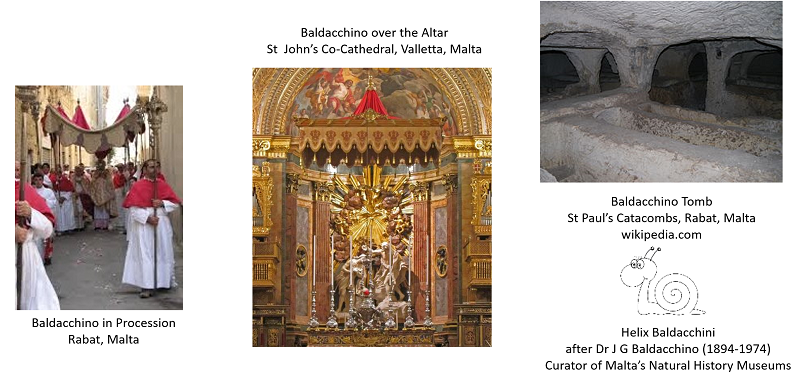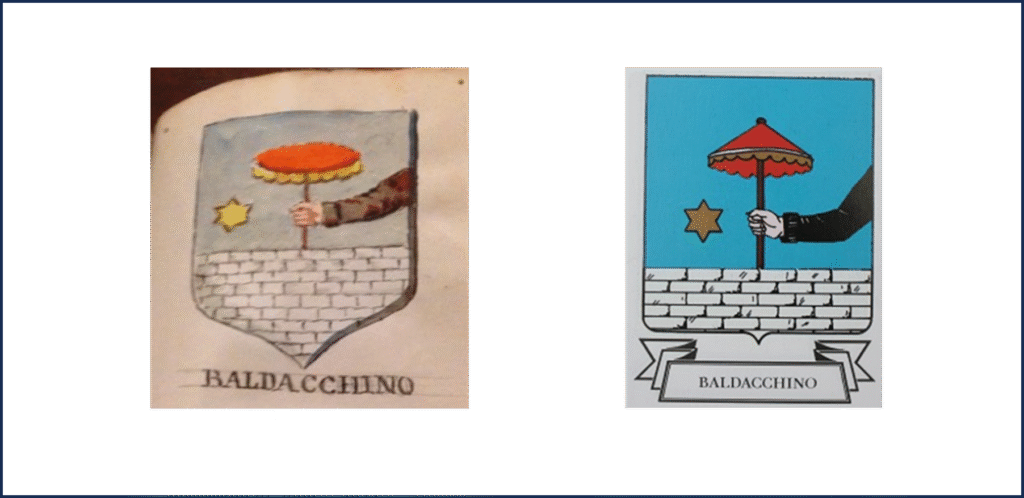Baldacchino is an Italian word present in Italian church registers dating back to the mid-1500s and we have found many Baldacchinos in the registers of the province of Agrigento on the southern coast of Sicily. Baptism records for Baldacchinos born in the 1500s have been found in the registers of Favara, Canicatti, Raffadali and Agrigento, the capital of the province. The name continues primarily in Sicily and also on the Italian mainland to present day. The church registers of Agrigento province contain many of the most frequent Maltese surnames, or close spellings of them, and academic evidence suggests that the earliest Maltese surnames came from a ‘triangle in Sicily with Agrigento, Caltanissetta and Gela at its points’ (G Hull, ‘The Oldest Maltese Surnames’ in Sicily and the Mediterranean, ed Karagoz and Summerfield, 2015). Following the Norman conquest and the eventual expulsion of Muslims from Malta in about 1249, the first Sicilians were sent to settle in Malta from about 1250-1400, with interchange between the countries continuing through the centuries. The Baldacchino surname, in the form of Baldakin, appears in the earliest rosters of Malta’s inhabitants from the early 15th century and was prevalent by the time that church registers became available in the 16th century.
Although the word baldacchino can be found in English writings and dictionaries, the English form of the word is baldachin. Probably the most famous baldacchino is the Baldacchino di San Pietro, Bernini’s creation atop St Peter’s tomb at the Vatican. The word means a canopy of state or a canopy over an altar and Bernini’s stands 66 feet high. There are plenty of other baldacchinos in Malta and around the world to choose from, even a snail! See in particular though the use of baldacchinos in processions, something seen frequently in the many church processions in Malta. The surname Baldacchino may be an occupational one, referring to those who carried the baldacchinos. Alternatively, the term baldacco is an old Italian name for Baghdad and some theorise that the Baldacchino surname derives from those who made the baldacchinos using the luxurious silk cloths produced in Baghdad. The 19th century family crest or coat of arms, existing for many Maltese surnames but of no heraldic significance, certainly points in the direction of those carrying the baldacchinos.

However, it seems unlikely that there was a profession of baldacchino carrier, rather they were probably drawn from the ranks of the clergy, and just as unlikely that there was an industry of making baldacchinos in southern Sicily in medieval times, a task that master craftsmen probably undertook as a part of their many activities in the construction of a church or cathedral. In addition, occupational surnames such as the explanations above hypothesize, might be expected to have multiple origins, names like Smith, Weaver, Turner and Taylor. Yet the evidence found to date strongly indicates that Baldacchino was a surname of single origin in the Province of Agrigento, Sicily. Therefore, another possibility for the surname’s origin is offered. Baldacchinos or the closely related ciboriums had been in Christian churches for many centuries prior to the consecration of Agrigento Cathedral in 1099 and it seems likely that this cathedral also had a baldacchino. If it is accepted that the surname originated in the province of Agrigento, then perhaps the surname is a locational one named after the specific baldacchino in Agrigento Cathedral.
